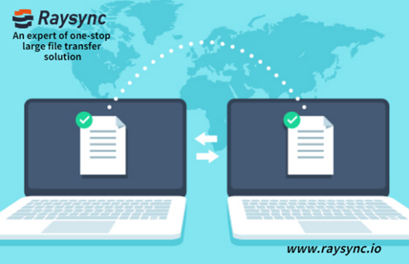What are the Requirements for Secure File Transfer 2024?
December 22, 2023In today's interconnected world, the secure transmission of files is a critical aspect of any business' operations. Enterprises, imbued with the responsibility of handling sensitive data, are particularly obliged to ensure the utmost security in their file transfers. This responsibility underpins both client trust and business integrity, making it imperative for enterprises to employ secure file transfer protocols and solutions.
What is secure file transfer?
Secure file transfer is when files are transferred using a security protocol to secure that communication channel. This is incredibly important in corporate environments because organizations are regularly handling personal and sensitive data.

Most secure file sharing methods use standard protocols that provide encrypted file transfer. These include:
● SFTP
SFTP transfers files with the Secure Shell (SSH) connection. SFTP is an encrypted file transfer network protocol that can enable remote login to operate over a network that lacks security.
● FTPS
FTPS (short for File Transfer Protocol Over SSL/TLS) offers encryption and uses an application layer wrapper, known as Secure Sockets Layer (SSL) to enable secure and private communications across a network.
● HTTPS
HTTPS secures websites when users are providing sensitive information like credit card numbers or other personal information. The protocol offers multiple layers of data protection including data integrity, encryption, and authentication.
Why You Need A Secure File Transfer Service?
Businesses today face many different security threats and a highly competitive and fast-moving environment. They need a secure file transfer system to protect and reliably transfer their sensitive, business-critical data.
When evaluating which solutions best serve your company, be mindful of their interoperability with existing systems and with each other. Furthermore, be sure your investments are best suited to serve your organization both now and in the future.
So, it’s important to select a reliable and secure file transfer service. In this article, we will list some requirements for secure file transfer:
1.Operational Requirements: Audit logging and reporting should be a main concern for organizations deciphering their abilities to handle their own file transfers. Determine what types of logging are required and evaluate each of the tools on whether or not they’ll be able to meet your own specific needs. Additionally, be sure you’ll be able to easily monitor and maintain your file transfer solution.
2.Security Requirements: Begin by determining what level of encryption you’ll require, keeping in mind any compliance requirements or industry data legislature. Be sure to consider anti-malware solutions that do well to complement your existing set-up.
3.Compatibility Requirements: A qualified file transfer solution can perfectly integrate your existing systems, so that effectively reducing R&D costs to achieve data file linkage between business systems and operating system platforms, avoiding data islands.
4.Workflow Requirements: Aside from security, the workflow should be your biggest consideration in choosing a transfer system. If your file transfer doesn’t sync with your workflow, it won’t be efficient. More importantly, it won’t be used.
In recent years, traditional file transfer tools have started to show their age, and problems like network connections severing in midstream and login timeouts have become common. In addition, older encryption algorithms can now be compromised, placing data at risk. A modern, automated managed file transfer solution can address all these issues -- and eliminate the headaches associated with them.
Unlike FTP, which was not designed to be a secure protocol, MFT offers a number of advantages in security, administration, and scalability.
Raysync: A Secure Managed File Transfer Solution

Raysync’s high-speed transfer protocol is a core transfer technology developed based on the UDP transfer protocol. This breakthrough technology does not simply optimize or accelerate data transfer, but it takes a leap forward in the transfer technology to eliminate the underlying bottleneck while overcoming the limitations of traditional network and hardware. Raysync can fully make use of network bandwidth thus provides ultra-low latency, high speed, and end-to-end output service. The transfer rate can be increased by nearly 100 times, achieving over 96% of bandwidth utilization rate while easily adhering to the security, controllability, and stability requirements for TB-level large files and massive small files transfer.
With its high-speed transfer protocol, Raysync provides all-around support for enterprises in large file interactions and cross-platform cooperation, achieving standardization within and between enterprises.
Raysync’s intelligent data compression and intermittent transfer technology can also effectively reduce the network load, providing breakpoint resumes and data verification to ensure stable and reliable data transfer. The intelligent management system is able to meet the business requirements of enterprises such as data interaction, sync, and backup. Raysync makes sure to quickly integrate itself into existing OA, ERP, and other enterprise systems, thus effectively reducing R&D costs to achieve data file linkage between business systems and operating system platforms, avoiding data islands.
As a one-stop solution provider, Raysync has independently developed its core transfer technology with its professional technical teams to offer high-performance, secure, and reliable large file transfer and file management services for major enterprises.
Final Word
In conclusion, the importance of secure file transfer in an enterprise setting cannot be overstated. It is an essential element in maintaining the security, integrity, and confidentiality of sensitive business data. With the right solution, businesses can greatly enhance their operational efficiency while ensuring seamless and secure transfers. If you are now looking for a secure alternative large file transfer solution, Raysync will definitely be your best choice. Want to learn more about how to choose a secure file transfer solution? Tell us about your unique business needs and we'll tell you how an MFT solution can help!
You might also like
![[2022] Top 7 Best Large File Transfer Tools](http://images.ctfassets.net/bg6mjhdcqk2h/5rRok0Cr4mHnBjtgtKpeHt/c59b722cb8a33117668d6afabc08bbb0/sendanywhere.png)
Raysync News
July 21, 2020Large file transfer tools come to help manage the internal operations of enterprises and facilitate communication among the enterprises and employees. Here are top 7 best Large File Transfer Tools.
Raysync News
November 17, 2023Large file transfers are becoming increasingly important in multinational organizations. So, how to achieve secure cross-border large file transfer and what are the key points to keep in mind?

Raysync News
December 23, 2021we have a myriad of options to transfer large files over the Internet with no difficulties, in this article, we will have a look at the fastest 5 large file transfer solutions to do it.